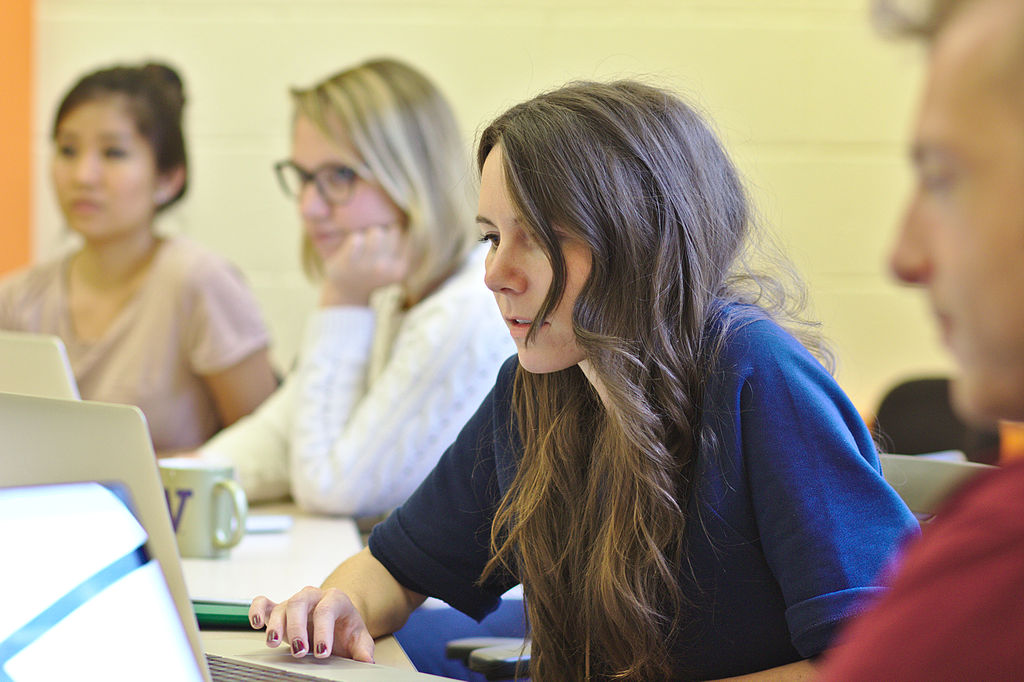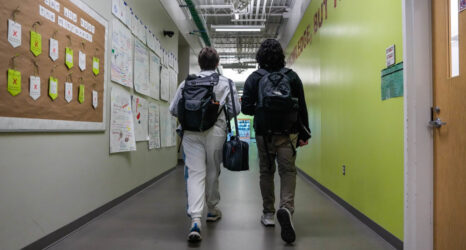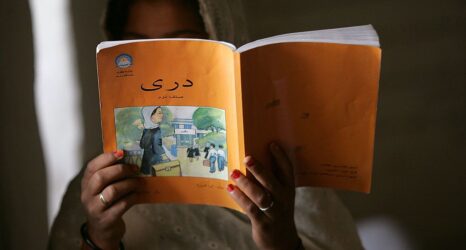
If it’s been years—or decades—since you started a new school year, you may be surprised to learn that some areas of high school curriculum haven’t evolved for the better since you roamed the halls of your alma mater. This is especially true when it comes to sex education.
Young people today are less likely to receive instruction on key sex education topics than they were 25 years ago. Only 32 states and the District of Columbia mandate sex education, and only 18 states require program content to be medically accurate. There’s also no guarantee that the content is culturally sensitive and LGBTQIA+ inclusive, ensuring that everyone gets the information that’s applicable to their lived experience.
This information gap has ripple effects. Teen pregnancy is still one of the leading contributors to high school dropout rates, and the United States has a higher teen birth rate than other high-income countries. Nearly 50 percent of all pregnancies in the country are unintended. As reproductive freedom comes under increasing attack, we need to arm young people with information.
To get a sense of what the future of sex ed might look like, I interviewed several professionals and students about their own sex ed experiences and their visions on how sex ed can be improved. Here’s what they say about how to make sex ed a more welcoming and comprehensive experience:
Create Inclusive Classrooms
In the sex ed classroom today, students are typically separated by gender to learn about their changing bodies. But dividing students up can instill shame around sex ed topics, since it implies secrecy. It can also alienate nonbinary and gender-diverse students who may not see their experience reflected in male or female groups.
Camryn, a Chicago-based college student who wants to work in a sex-positive career, said that her experience would have been more beneficial if all the students learned together.
“Feeling like I needed to be separated from the boys to see what a tampon is, it led to girls hiding tampons in their sleeves before going to the restroom, and that embarrassment follows you to adulthood. It wouldn’t hurt men to learn about a period when they’re in middle school.”
Discuss the Positive
Sex education is often framed around the potential negative outcomes of sex. It gets lumped in with education around risky behaviors like drugs and alcohol, or the message is exclusively centered on avoiding infections or pregnancy.
JB, a full-spectrum doula currently living on the road, remembers the limits of their abstinence-plus education. It encouraged abstinence or, if necessary, condom use but lacked real-world advice. “Where was the room for: Okay, at some point you’re not going to be abstinent anymore, what will I need to know then? Beyond just use a condom if you have sex.”
When the positive aspects of sex aren’t discussed, students don’t learn how to have an enjoyable experience with consent or to communicate their needs.
Kelley, a colleague and family planning counselor, explained how the lack of education affected her life. “It’s really been trial and error, and sometimes that trial and error doesn’t end well for folks.”
Syd, a Florida-based college student who grew up in Nebraska, said, “Even though I feel like I’m equipped with a good amount of information, I’ve been subjected to trial and error via other people, because others don’t have the same rules and understanding of consent that I do, which has led to some rather unpleasant experiences.”
Invest in Other Avenues for Education Outside of School
Helen Wang, an associate professor of communication at the University at Buffalo, believes entertainment-education can help fill the gaps in sex education. By using storytelling in entertainment programs, health and social issues are addressed through storylines that incorporate accurate information and introduced through characters that act as positive or negative or transitional role models, illustrating how their decisions, attitudes and beliefs affect their lives in terms of consequences.
Wang was involved in the evaluation of the award-winning show East Los High, which was purposely designed to have characters that tell an authentic story of minority youth living in the United States and the challenges they face. The first season focused on safe sex, unplanned pregnancy and different modes of contraception. There were also accompanying vlogs online that dove further into individual characters’ storylines beyond what was covered in the episodes.
Recently, Wang and her research team did a case study on a sex ed chat bot used in an entertainment-education initiative in India, which uses artificial intelligence to answer users’ unique questions and even connects them to resources.
“By presenting sex ed in compelling ways you can increase access to reliable information and encourage young people to ask questions without feeling judged,” she said. “I can’t emphasize enough the power of informal learning.”
Connect Sexual Health with Planetary Health
Sex ed often fails to teach students about their family planning choices, including their option to be childfree. Among the growing list of reasons people choose not to have children—like health reasons, costs and not wanting the additional responsibility—more people are also choosing not to have kids because they’re concerned about the future of the environment.
“The concept of eventually having children is often presented as a given, so just acknowledging the life choice of choosing to be childfree could be a revolutionary concept to introduce to young people,” said my colleague, Kelley.
People in the United States have one of the largest individual carbon footprints in the world. Having one less child is one of the most effective ways people can reduce their carbon footprint. And as the global population approaches 8 billion people, normalizing smaller families can help us leave room for wildlife and keep our ecosystems intact.
By getting creative about how we share sex ed information and thinking beyond the traditional curriculum, we can improve not only the sex education young people receive but the quality of their lives.
U.S. democracy is at a dangerous inflection point—from the demise of abortion rights, to a lack of pay equity and parental leave, to skyrocketing maternal mortality, and attacks on trans health. Left unchecked, these crises will lead to wider gaps in political participation and representation. For 50 years, Ms. has been forging feminist journalism—reporting, rebelling and truth-telling from the front-lines, championing the Equal Rights Amendment, and centering the stories of those most impacted. With all that’s at stake for equality, we are redoubling our commitment for the next 50 years. In turn, we need your help, Support Ms. today with a donation—any amount that is meaningful to you. For as little as $5 each month, you’ll receive the print magazine along with our e-newsletters, action alerts, and invitations to Ms. Studios events and podcasts. We are grateful for your loyalty and ferocity.
Up next:





